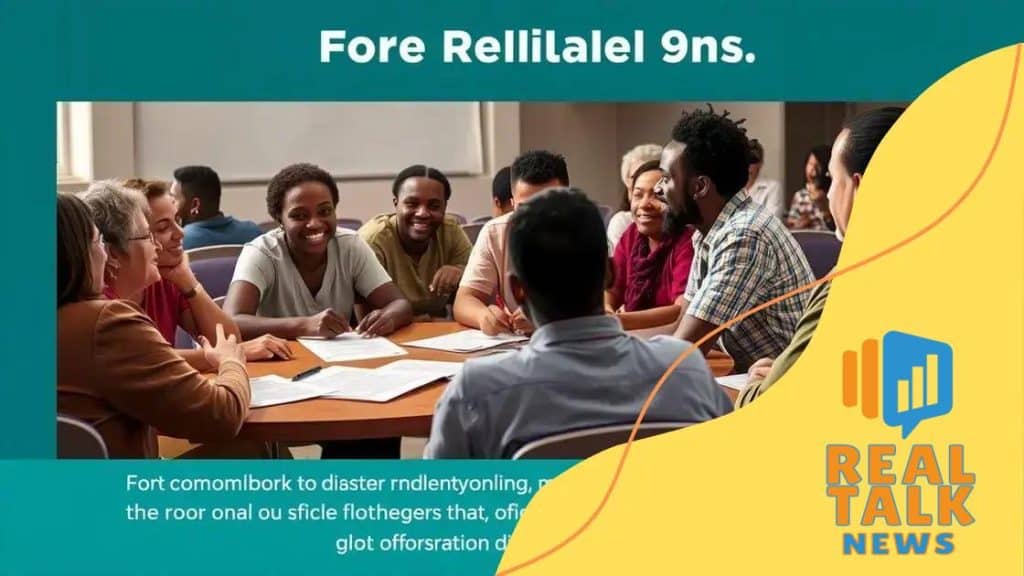Federal disaster relief programs for vulnerable communities

Federal disaster relief programs for vulnerable communities provide essential financial and technical support to help rebuild lives, prioritize community involvement, and address unique challenges faced by those in need.
Federal disaster relief programs for vulnerable communities play a vital role in recovery efforts. Have you ever wondered how these programs actually make a difference in people’s lives? Let’s delve into their significance and impact.
Understanding federal disaster relief programs
Understanding federal disaster relief programs is essential for communities that face challenges after a disaster strikes. These programs are designed to provide financial and technical assistance, ensuring that help is available when it is needed most.
Overview of Federal Assistance
Many federal programs, such as FEMA grants, focus on aiding households and businesses. They aim to promote recovery and stability within affected communities. For vulnerable populations, these programs often provide tailored resources that address specific needs.
Types of Assistance Available
- Individual Assistance: Direct support for families affected by disasters.
- Public Assistance: Funding for local governments to repair infrastructure.
- Hazard Mitigation: Investments to minimize damage from future disasters.
- Small Business Administration Loans: Financial help for businesses to recover and rebuild.
Each type of assistance plays a crucial role in recovery, aiming to restore normalcy for individuals and communities alike. By understanding these different forms, residents can be better prepared to seek the help they need.
It’s important for communities to stay informed about application processes and eligibility requirements. Federal disaster relief programs often have specific criteria that applicants must meet to receive aid. This information can usually be found on government websites or through local agencies dedicated to disaster recovery.
Furthermore, community engagement can significantly enhance the effectiveness of these programs. Local leaders and organizations can help bridge the gap between federal assistance and those in need by providing valuable resources and guidance.
Significance of Community Participation
When communities work together, the impact of federal disaster relief can be amplified. Collaboration between residents, local organizations, and government officials leads to a more effective recovery process. This cooperative effort ensures that everyone’s voice is heard, paving the way for a more resilient future.
Key resources available for vulnerable communities
There are many key resources available for vulnerable communities in the wake of disasters. These resources aim to provide immediate support and long-term recovery options. By understanding these resources, communities can better prepare for and respond to challenges.
Government Assistance Programs
Various government programs offer support to help families and communities recover. The Federal Emergency Management Agency (FEMA) provides grants that can cover housing assistance and temporary shelter. Additionally, the Small Business Administration offers low-interest loans to businesses affected by disasters, helping them to rebuild and maintain operations.
Nonprofit Organizations and Community Groups
- American Red Cross: Provides shelter, food, and health services during disasters.
- United Way: Offers financial assistance and resources for recovery.
- Local charities: Many local organizations specialize in helping residents recover.
- Faith-based groups: Often mobilize quickly to provide support and resources.
These organizations work alongside government efforts, ensuring that help is available for those most in need. Many have established networks within communities to facilitate speedy assistance during crises.
In addition to federal aid and nonprofit help, local governments often implement emergency response plans that include resources such as shelters, food drives, and recovery programs. Understanding these plans is vital for community resilience.
Support for Mental Health
Rebuilding after a disaster is not just about physical recovery; mental health is also crucial. Resources like counseling services and support groups help address the emotional toll that disasters can take on individuals and families. Many organizations provide mental health resources aimed at vulnerable populations, ensuring they receive the support needed to heal.
Application process for disaster relief

The application process for disaster relief can seem complex, but understanding it is crucial for those affected. This process ensures that individuals and communities can access the necessary aid to begin rebuilding their lives.
Steps to Apply for Federal Assistance
To start, individuals should gather all relevant documentation. This includes identification, proof of residence, and details of damages incurred. Once you have your documents ready, the next step is to apply online through the appropriate government site, such as the FEMA website.
Important Information to Include
- Personal Information: Full name, address, and contact details.
- Description of Damage: Detailed accounts of what was lost or damaged.
- Insurance Information: Details of any insurance policies that may apply.
- Financial Information: Information about household income.
Providing accurate information can help speed up the processing of your application. In addition, those who prefer face-to-face assistance can visit local disaster recovery centers set up in affected areas.
Once the application is submitted, it is important to stay patient and monitor its status. Applicants will receive notifications updating them on the progress. Follow-ups may be necessary to provide additional documentation or clarify information to the authorities.
Timeline for Approval
The timeline for approval can vary significantly. Generally, applicants can expect a decision within a few weeks. However, more complex cases may take longer. It’s essential to remain in contact with the application hotline to keep informed.
Overall, being prepared and knowledgeable about the application process plays a vital role in obtaining the aid needed. Each step brings applicants closer to recovery, helping communities get back on their feet.
Examples of successful recovery initiatives
There are numerous successful recovery initiatives that illustrate how communities can rebuild effectively after disasters. These examples offer insights and inspiration for others facing similar challenges.
1. New Orleans after Hurricane Katrina
After Hurricane Katrina, New Orleans embarked on a monumental recovery process. The city focused on rebuilding infrastructure and homes, with community involvement being a key component. Local leaders worked alongside residents to create plans that addressed safety and sustainability.
2. Superstorm Sandy Recovery in New Jersey
New Jersey implemented a comprehensive recovery strategy after Superstorm Sandy. This involved financial support to homeowners and businesses severely impacted by the storm. The state launched programs to elevate homes and improved flood defenses, demonstrating a commitment to long-term safety.
3. The Community Resilience Program in Haiti
In Haiti, the Community Resilience Program helped communities prepare for future disasters by building local capacity. It focused on creating sustainable practices, such as training locals in disaster preparedness and response. This proactive approach has strengthened communities significantly.
4. The Wildfire Recovery Efforts in California
California has faced numerous wildfires, prompting effective recovery initiatives. Organizations provide resources for immediate relief, such as temporary housing and financial assistance. Long-term strategies have been developed to improve forest management and community preparedness, reducing future risks.
- Community involvement is key in these initiatives.
- Tailored support based on specific community needs generates better outcomes.
- Preparedness programs help reduce the impact of future disasters.
- Long-term recovery plans focus on sustainable development.
These examples highlight the power of resilience and collaboration. By drawing lessons from these successful initiatives, communities can better plan their recovery efforts and build back stronger.
Challenges faced by communities seeking aid
Communities seeking aid after disasters often encounter various challenges that can hinder their recovery efforts. These issues can complicate the process of obtaining necessary support and resources.
Understanding Common Obstacles
One major challenge is access to information. Many residents may not be aware of the available resources or how to apply for assistance. In addition, language barriers can prevent non-English speakers from fully understanding the application processes.
Resource Limitations
Another significant issue is the limited availability of resources. When disasters strike, the demand for aid often exceeds the available supply, leading to delays in support. Communities may face competition for grants and funding, making it difficult to secure the necessary help.
- Funding Shortages: Disasters often drain local and federal funding reservoirs.
- Staffing Issues: Aid organizations may struggle with a lack of trained staff to handle increased demand.
- Logistical Problems: Transportation and communication infrastructure may be damaged, complicating aid delivery.
- Community Coordination: Lack of organized community efforts can result in less effective aid distribution.
Additionally, the emotional toll of a disaster can create barriers to seeking help. Survivors may feel overwhelmed, leading to delays in reaching out for assistance. It is crucial for communities to work together and develop organized efforts to overcome these challenges and ensure that everyone receives the aid they need.
Lastly, misinformation can spread quickly in the chaos following a disaster. This often leads to confusion regarding the types of assistance available and how to access them. Communities must aim to provide clear and accurate information to combat this problem.
FAQ – Frequently Asked Questions about Federal Disaster Relief Programs
What types of assistance can I receive from federal disaster relief programs?
You can receive various types of assistance, including individual financial support, public infrastructure repairs, and small business loans.
How do I apply for disaster relief assistance?
To apply, gather necessary documents such as proof of identity and damage, then submit your application online or at local disaster recovery centers.
What challenges do communities face when seeking aid?
Communities often face challenges like limited resources, misinformation, and access to necessary information, making it difficult to receive aid.
Can you provide examples of successful recovery initiatives?
Successful recovery initiatives include New Orleans after Hurricane Katrina and New Jersey’s recovery efforts after Superstorm Sandy, demonstrating effective community involvement and resource management.





